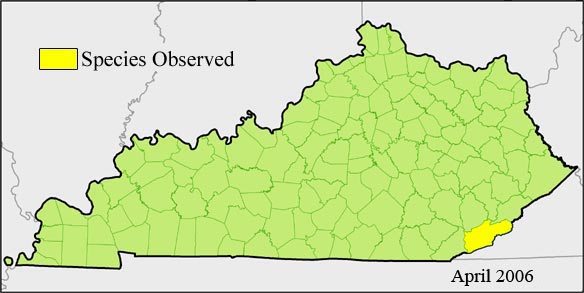|
Habitat:
Acid soil of bogs, shores, and meadows, often in seasonally inundated sites.(Gleason and Cronquist); in KY, temporary pool of water in mnts.
|
Species Description:
Northern Bog Clubmoss resembles a large moss. It has prostrate or arching stems that root at irregular intervals and give rise to erect branches that are up to 10 cm high. The narrow, pointed leaves are 4-8 mm long and clothe the stems and branches in 8-10 ranks. Each spore is subtended by a bract, or sporophyll, that is similar to the leaves and borne in dense spikes at the top of erect branches. It is difficult to distinguish the fertile and sterile portions of the branches.
|
Phenology:
|
Additional Information at NatureServe
|
Diagnostic Characteristics:
The most distinguishing character of this clubmoss is that it occurs in bogs or wetlands with a deep peat base. It has horizontal and scattered vertical stems. Spores are produced in cone-like structures formed by modified leaves, although they are similar in shape to stem leaves. This strobili is only slightly thicker than the stem (about 0.2 mm) and the entire fertile shoot is not as long as other species (3.5-6cm).
|
Management:
Exotic pest plants are a threat to this species and should be removed. Avoid creating access to the site through trail or road construction.
|
Global Range:
Europe, northeastern North America, and spotty distribution in northwestern North America.
|
Known Kentucky Occurrences:

|